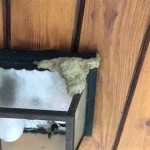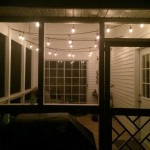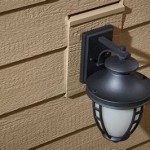How to Wire an Outdoor Socket
Adding an outdoor socket to your property can be a valuable upgrade, providing convenient power for various purposes, from holiday decorations to yard tools. However, wiring an outdoor socket requires careful planning and adherence to safety regulations. This article provides a detailed guide on how to install an outdoor socket while ensuring electrical safety.
1. Planning and Preparation
Before starting the installation process, thorough planning and preparation are crucial.
1. Determine Location and Purpose
Decide on the best location for your outdoor socket based on your needs. Consider accessibility, proximity to existing electrical sources, and potential weather exposure. The purpose of the socket will also influence its placement.
2. Check Local Building Codes
Familiarize yourself with local building codes and regulations regarding outdoor electrical installations. This ensures compliance and prevents potential fines or safety hazards.
3. Gather Necessary Materials
Gather all the required materials before starting the installation. This includes:
- Outdoor weatherproof socket
- Appropriate wire (e.g., THHN, UF) with sufficient gauge for the intended load
- Junction box for wire connections
- Electrical tape
- Wire strippers
- Crimping tool (for wire connectors)
- Voltage tester
- Circuit breaker and fuse
- GFCI outlet (ground fault circuit interrupter)
2. Running the Wiring
Once you have gathered the necessary materials, it's time to run the wiring for your outdoor socket. This process involves the following steps:
1. Locate Existing Electrical Panel
Identify the nearest electrical panel to your desired outlet location. If you have a new panel, you may need to add a dedicated circuit for the outdoor outlet.
2. Run the Wire
Use a conduit or raceway to protect the wire from damage and the elements. If running the wire underground, consider using UF-rated cable, specifically designed for buried installations.
3. Secure the Wire
Use cable staples or clamps to secure the wire to the wall or conduit along its path. Ensure the wire is properly supported and not subject to stress or strain.
3. Connecting the Wiring
After running the wire, you need to connect it to the outdoor socket and the electrical panel.
1. Connect to the Outlet
Open the outdoor socket and connect the wires to the appropriate terminals. Consult the manufacturer's instructions for specific wiring configurations. Ensure grounding is properly connected.
2. Connect to the Electrical Panel
Connect the other end of the wire to the electrical panel. If you're adding a new circuit, ensure it has a dedicated breaker and fuse.
3. Grounding
Grounding is crucial for electrical safety. Ensure the outdoor socket and the wiring are properly grounded to prevent electrical shocks.
4. Testing and Finishing
After wiring and connecting the socket, it's important to test the installation and ensure safety.
1. Test the Connection
Use a voltage tester to verify that the socket is receiving power. If the tester indicates an active connection, you can move on to the next step.
2. Test the GFCI
Test the GFCI outlet by pressing the "Test" button. The outlet should trip. Then, press the "Reset" button to restore power.
3. Install Cover Plate
Attach the cover plate to the outdoor socket, ensuring a secure and weatherproof seal.

How Do You Install The Mk Marsterseal Plus Outdoor Sockets

How To Work With An Outdoor Power Socket

Tapping Into An Existing Fine Homebuilding

Outdoor Plug Socket Installation Westcliff On Sea Niceic Electricians

Outdoor Socket Installation Cost 2024 How Much To Fit One

How To Install An Outdoor Socket

Outdoor Socket Installation Cost 2024 How Much To Fit One

How To Install The Easiest Outdoor Socket

Outdoor Socket Installation Rml Electrical

How Much Does It Cost To Install Outdoor Socket In 2024 Checkatrade
Related Posts







